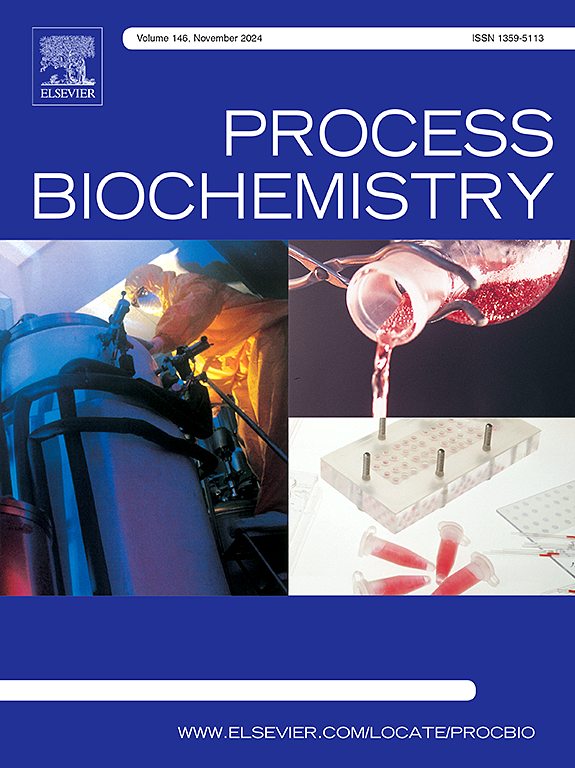Affinity resin selection for efficient capture of bispecific antibodies as guided by domain composition
IF 3.7
3区 生物学
Q2 BIOCHEMISTRY & MOLECULAR BIOLOGY
引用次数: 0
Abstract
Affinity chromatography is a cornerstone of bispecific antibody (bsAb) purification, with resin selection playing a critical role in developing downstream processes to ensure both process efficiency and product quality. Unlike monoclonal antibody purification, where Protein A chromatography is the gold standard for antibody capture, affinity chromatography in bsAb purification is often employed not only for capture but also for the removal of hard-to-eliminate product-related impurities. This study demonstrates that affinity resin selection can be effectively guided by analysing the domain composition of the target bsAb molecule and its potential impurities. Using faricimab, a CH1-CL CrossMab, as a model, Protein L — an affinity resin targeting the variable region of the light chain — was predicted to be the most effective affinity chromatography due to its different binding avidity towards faricimab from its major product-related impurities. Validation through screening four different types of affinity chromatography, each binding to distinct regions of faricimab, confirmed this prediction. Under optimized elution conditions, the purification process achieved ∼73 % purity from ∼30 % in the culture with ∼86 % monomeric yield, as well as decent removal of host cell proteins and host cell DNA.
根据结构域组成选择亲和树脂,高效捕获双特异性抗体
亲和层析是双特异性抗体(bsAb)纯化的基础,树脂选择在开发下游工艺中起着至关重要的作用,以确保工艺效率和产品质量。与单克隆抗体纯化不同,蛋白A层析是抗体捕获的金标准,亲和层析在bsAb纯化中通常不仅用于捕获,而且用于去除难以消除的产品相关杂质。该研究表明,通过分析目标bsAb分子的结构域组成及其潜在杂质,可以有效地指导亲和树脂的选择。以faricimab(一种CH1-CL CrossMab)为模型,预测蛋白L(一种针对轻链可变区域的亲和树脂)是最有效的亲和层析,因为它与faricimab的主要产品相关杂质的结合亲和度不同。通过筛选四种不同类型的亲和层析,每种结合在法利昔单抗的不同区域,证实了这一预测。在优化的洗脱条件下,纯化过程从培养物的~ 30 %中获得~ 73 %的纯度,单体产量为~ 86 %,并且可以很好地去除宿主细胞蛋白和宿主细胞DNA。
本文章由计算机程序翻译,如有差异,请以英文原文为准。
求助全文
约1分钟内获得全文
求助全文
来源期刊

Process Biochemistry
生物-工程:化工
CiteScore
8.30
自引率
4.50%
发文量
374
审稿时长
53 days
期刊介绍:
Process Biochemistry is an application-orientated research journal devoted to reporting advances with originality and novelty, in the science and technology of the processes involving bioactive molecules and living organisms. These processes concern the production of useful metabolites or materials, or the removal of toxic compounds using tools and methods of current biology and engineering. Its main areas of interest include novel bioprocesses and enabling technologies (such as nanobiotechnology, tissue engineering, directed evolution, metabolic engineering, systems biology, and synthetic biology) applicable in food (nutraceutical), healthcare (medical, pharmaceutical, cosmetic), energy (biofuels), environmental, and biorefinery industries and their underlying biological and engineering principles.
 求助内容:
求助内容: 应助结果提醒方式:
应助结果提醒方式:


